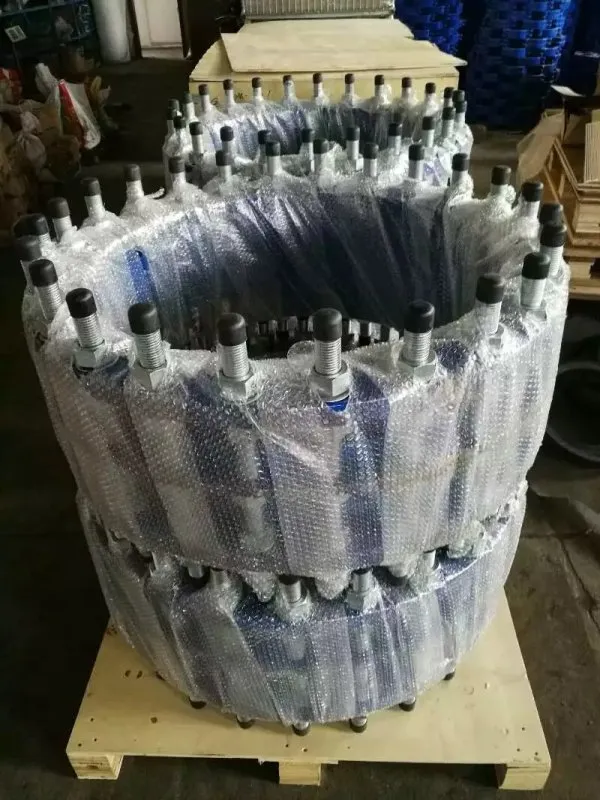Optimizing Performance and Durability of Bronze Butterfly Valves in Industrial Applications
Understanding the Bronze Butterfly Valve A Comprehensive Overview
Valves are essential components in piping systems, utilized to control the flow of fluids and gases. Among the various types available, the butterfly valve stands out for its simplicity, compact design, and effectiveness in managing fluid dynamics. Specifically, bronze butterfly valves are highly regarded in various industries for their durability and resistance to corrosion. This article delves into the features, advantages, applications, and maintenance considerations of bronze butterfly valves.
Features of Bronze Butterfly Valves
Bronze butterfly valves are crafted primarily from an alloy of copper and tin, known for its strength and corrosion resistance. This makes them particularly suitable for applications involving water, steam, and various chemical processes. The design of a butterfly valve consists of a disc, which rotates around a central axis, allowing for efficient control of flow. When the valve is fully opened, the disc is parallel to the flow of the fluid, minimizing pressure drop; when closed, the disc obstructs the flow entirely.
Typically, bronze butterfly valves come with various seating options, including rubber, Teflon, and other elastomers, enabling them to create a tight seal when closed. Their compact design also means they require less space than traditional gate or globe valves, making them an ideal choice for installations where space is limited.
Advantages of Bronze Butterfly Valves
One of the primary advantages of bronze butterfly valves is their excellent resistance to corrosion, particularly in harsh environments. Bronze as a material withstands oxidation and is impervious to many chemicals, making it suitable for industries such as water treatment, marine applications, and chemical processing. Additionally, the lightweight design of these valves allows for easy installation and maintenance, reducing labor costs and downtime.
Another significant benefit is their operational efficiency. The quick 90-degree rotation enables rapid opening and closing, allowing for precise flow control and minimizing the response time in systems that require swift adjustments. Furthermore, the design reduces the pressure drop compared to other valve types, improving the overall efficiency of the system.
bronze butterfly valve

Applications of Bronze Butterfly Valves
Bronze butterfly valves find applications in various sectors due to their versatility and robustness. In the municipal water supply and wastewater treatment industries, they are often utilized for throttling and isolating flow. Their ability to handle varying pressures makes them ideal for use in irrigation systems as well.
Additionally, in the chemical processing industry, these valves are employed to manage the flow of corrosive substances. Their resilience against chemical reactions ensures long service life and dependable operation. In HVAC (heating, ventilation, and air conditioning) systems, bronze butterfly valves are used to regulate airflow, enhancing system efficiency.
Bronze butterfly valves are also common in marine applications, where resistance to seawater corrosion is critical. This includes valves for bilge pumping systems, ballast tanks, and other critical areas where durability and reliability are paramount.
Maintenance Considerations
To ensure the longevity and reliable performance of bronze butterfly valves, regular maintenance is essential. It is advisable to inspect the valves periodically for signs of wear, corrosion, or buildup of debris that could hinder their operation. Lubricating the stem and shaft can also prevent operational issues. Additionally, operators should be aware of the valve's operating conditions, as excessive pressure or temperature fluctuations can lead to premature failure.
In conclusion, bronze butterfly valves play a crucial role in modern fluid management systems across a multitude of industries. Their durability, resistance to corrosion, and effective flow control capabilities make them a preferred choice for many applications. Understanding their features, advantages, and maintenance needs is essential for any operation seeking to optimize their fluid control systems and ensure long-lasting, efficient performance. As industries continue to evolve, the importance of reliable components like bronze butterfly valves remains ever significant, ensuring safe and efficient operations in various fields.
-
The Smarter Choice for Pedestrian AreasNewsJun.30,2025
-
The Gold Standard in Round Drain CoversNewsJun.30,2025
-
The Gold Standard in Manhole Cover SystemsNewsJun.30,2025
-
Superior Drainage Solutions with Premium Gully GratesNewsJun.30,2025
-
Superior Drainage Solutions for Global InfrastructureNewsJun.30,2025
-
Square Manhole Solutions for Modern InfrastructureNewsJun.30,2025
-
Premium Manhole Covers for Modern InfrastructureNewsJun.30,2025
